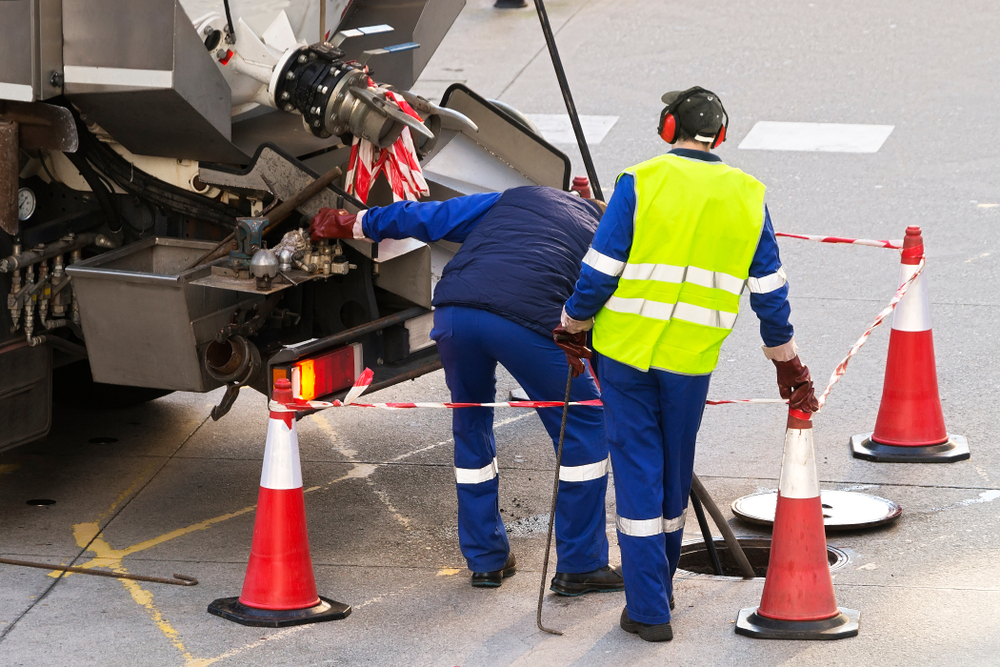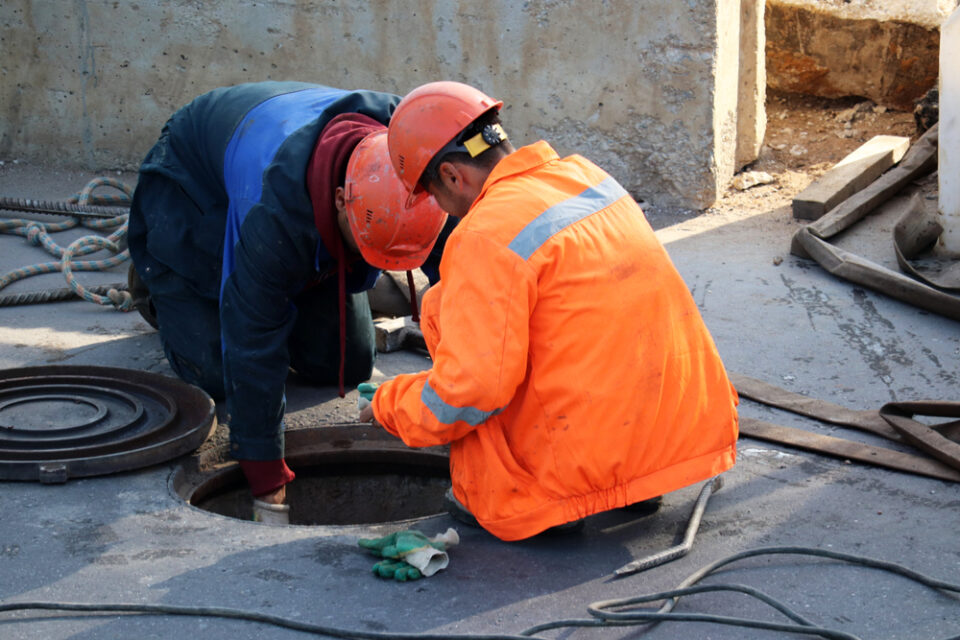Have you ever wondered what happens in these pipes under your property? The last time you thought about your sewer lines the hidden heroes who calmly remove the water day. If you are like most property owners, the answer is probably “often not enough.”
Here’s the case: Sewerage problems rarely declare themselves politely. One day everything is going well, and next time you work with backup, dishonest odor or worse sewage in your garden. This is why it is not just useful knowledge to understand sewer line inspection processes; It is necessary to protect your property and your wallet.
This guide breaks out what you want to know about sewer line inspections with clear, right words. You will learn about different inspection methods, understand what the inspectors see, and find out how many times you are planning these important checks.
Table of Contents
Why Regular Sewer Line Inspections Matter
Think of sewer line inspections as a health examination for the plumbing facility for your property. As you do not want to leave your annual medical examination, the sewer lines are worth the same preventive care. Regular inspections become expensive disasters before catching small problems.
The financial benefits alone make inspections worthwhile. A minor tree root intrusion spotted early might cost a few hundred dollars to address. Leave it unchecked, and you could face a complete pipe collapse requiring excavation and replacement easily running into five figures..
Types of Sewer Line Inspection Methods
CCTV Camera Inspections
CCTV camera views represent the gold standard in sewage diagnostics. These refined systems use waterproof cameras on flexible cables to navigate through pipes, which transmit real -time videos for monitoring above the ground. High -resolution shows everything from smaller cracks to large barriers.
Technology has been remarkable in recent years. Modern CCTV devices are luminous camera heads that maintain recording skills for proper orientation, powerful LED lights for clear visibility and recordings for documentation. Some systems even include sonar attachments for inspecting water-filled pipes.
Push Rod Camera Inspections
Push rod cameras offer a more compact alternative for smaller pipes and tighter spaces. These systems use semi-bark cables that manually push through technician pipes, making them ideal for housing lines and many twist areas.
While sliding rod cameras cannot travel that usually motorized CCTV devices, they stand out in specific situations. Their small cameras navigate in narrow pipes like 50 mm and reach areas that reach large equipment. The portability of push rod systems also makes them perfect for quick inspections and hard-to-reach locations.
Sonar Inspections
When the pipes are completely submerged or filled with sediment, traditional cameras struggle to provide clear images. It is from here that Sonar Technology proves to be invaluable. By using sound waves to create wide profiles of pipe interiors, sonar inspections also work under the Marki water conditions.
Echolody systems are distinguished in sediment build -up detection, identify pipe deformity and assess the thickness of deposits. This makes them particularly useful for large and industrial applications where traditional cameras can remember important details hidden underwater or debris.
Visual Inspections
Sometimes the simplest methods are effective. Visual inspections of available regions provide preliminary information, purification and deferred pipe-valuable initial information. Experienced technicians can only see many problems by observing the pipe’s location, water flow pattern and visible damage.
These surface level studies often reveal problems such as incorrect connections, visible cracks or rotin filtration at access points. They also help technicians plan more detailed camera inspection by identifying the best entrance points and potential obstacles.

The Step-by-Step Sewer Line Inspection Process
Pre-Inspection Preparation
Before entering the pipe, proper preparation ensures a smooth, effective inspection. Technicians usually begin by discussing your concerns and reviewing any previous inspection report or repair history. This background information helps focus on inspection on potential problems.
The area around access points needs clearing for equipment setup. Property owners must remove all objects that block a cleansing or hole and ensure that technicians have clear roads for work areas. If you are experiencing active backup, technicians recommend cleaning the first obstacles to enable appropriate camera access.
Access Point Location
Finding appropriate entrance points for camera equipment requires specialization and sometimes creativity. Most of the properties are cleaning gates designed specifically for maintenance access, usually located near the foundation or on strategic points with a sewer line.
When standard access points are not available or available, technicians can use roof valves, toilet connections or floor drains. Each option has benefits and limitations. Experienced inspectors evaluate many factors of pipe configurations, camera equipment and inspection goals to choose optimal entrance points.
Camera Insertion and Navigation
With preparation complete and access secured, the actual inspection begins. Technicians carefully insert camera equipment, monitoring video feeds while slowly advancing through the pipe system. This methodical approach ensures nothing gets missed and prevents equipment damage.
Navigation requires skill and patience. Operators should interact, interaction, couples and obstacles while maintaining camera orientation and image quality. They adjust the speed of the journey depending on the light level, camera angles and the speed of raising the speed of the journey. In many years of experience, technicians help identify the subtle signals of problems that miss untrained eyes.
Recording and Documentation
Professional inspection always involves detailed documentation. High quality video captures the position of the entire pipe system, while the distance measurement detected the exact places for any problem. This documentation proves invaluable for multiple purposes.
The best inspection services provide multiple formats for your records. DVD recording, digital files and printed reports ensure that you have available documents for insurance requirements, sales of properties or future maintenance schemes. Protect these items – they are valuable real estate history that can save significant times and money on the road.
Post-Inspection Analysis
After completing the physical inspection, the technicians analyse the findings to provide extensive assessments. This involves reviewing the recordings, comparing today’s conditions with previous inspections and prioritizing any problems detected.
The analysis is just outside identifying problems. Experienced technicians evaluate the basic causes, predict potential progression and consider different repair options. They are factors in pipe materials, real estate age, soil condition and other variables that affect long -term sewage health.
How Much Does a Sewer Line Inspection Cost?
Average Inspection Costs in Australia
Sewer line inspection costs in Australia vary greatly based on location and service scope. Basic housing inspections typically range from $ 250 to $ 500, with basic reporting standard CCTV inspection of the most important sewer lines. This investment provides valuable security and documentation.
More extensive inspections that include many properties or wide pipe networks cost more. Commercial inspections are often run from $ 500 to $ 1500, reflect large systems and detailed reporting requirements. Specialised inspections using sonar or other advanced technologies add to base costs.
Factors Affecting Inspection Pricing
Several variables influence inspection costs beyond basic service levels. Property accessibility plays a major role easily accessed clean-outs reduce labour time and costs. Conversely, difficult access requiring special equipment or excavation increases prices significantly.
Pipe length and complexity affect pricing too. Longer pipe runs take more time to inspect thoroughly, while multiple branches or levels require additional work.
Geographical location affects costs through the working rate and level of competition. Metropolitan sectors can offer more competitive prices due to many service providers, while remote places often have high costs due to travel time and limited alternatives.
DIY vs Professional Sewer Line Inspections
Can You Inspect Sewer Lines Yourself?
The rise of affordable sewer line inspection cameras motivates some property owners to try DIY -Cloak inspection. Basic Consumer Class cameras starting around $ 200 look like negotiating options for professional services. However, equipment cost represents just one consideration.
Effective inspection requires more than treading a camera just through the tube. Explosing conclusions requires identifying different pipe materials, understanding the general vs. problematic conditions and experiencing subtle warning signals.
Benefits of Professional Inspections
Professional inspections deliver value beyond basic camera work. Experienced technicians recommended the beginner, who correctly assesses the severity, and recommends appropriate solutions. Their knowledge of local conditions, soil types and general problems improves clinical accuracy.
Documentation quality represents another professional advantage. Industry reports have weight with insurance companies, buyers and contractors. Professional quality video equipment produces clear images compared to consumer cameras, while appropriate lighting and camera control details remember DIY inserts.
When to Call the Experts
Some conditions always warn professional inspection. Document meeting for pre-credited inspections requires industry standards DIY report will not satisfy most buyers or mortgages. Insurance claims similarly demand professional assessments for validity.
Suspected major problems deserve expert attention too. If you experience backup, frequent Odor or many stability problems, preventing professional diagnosis prevents expensive errors. Experts quickly recognize whether problems arise in private lines or the main council, saving time and frustration.
Protecting Your Property Through Regular Inspections
Sewer line inspections may not be at the top of exciting property maintenance tasks, but their significance cannot be eliminated. During this guide, we discovered how these assessments protect your investment, prevent expensive emergency conditions and maintain a healthy environment. The technology available today makes inspections more intensive and less aggressive than ever.
Evidence clearly supports a part of regular real estate maintenance. Before catching the roots of the tree, they get an obstacle to identifying deteriorated pipes before the fall, preventive inspections save money and stress. Whether you are the owner of a modest house or manage commercial properties, reported to make maintenance, repair and upgrading decisions, understand the status of your sewer system.

